Now that I am in the midst of my first sailing trip aboard GEKKO I thought I might be writing about safety. You see, this is not just the maiden voyage of my new boat, it is also my own very first sailing adventure single handed. Sailing alone is, I must admit, very lush, it has many recreational aspects I didn´t knew about beforehand and it is I guess the highest form of individual freedom when going out alone. At the same time, sailing alone can be very, very intimidating …
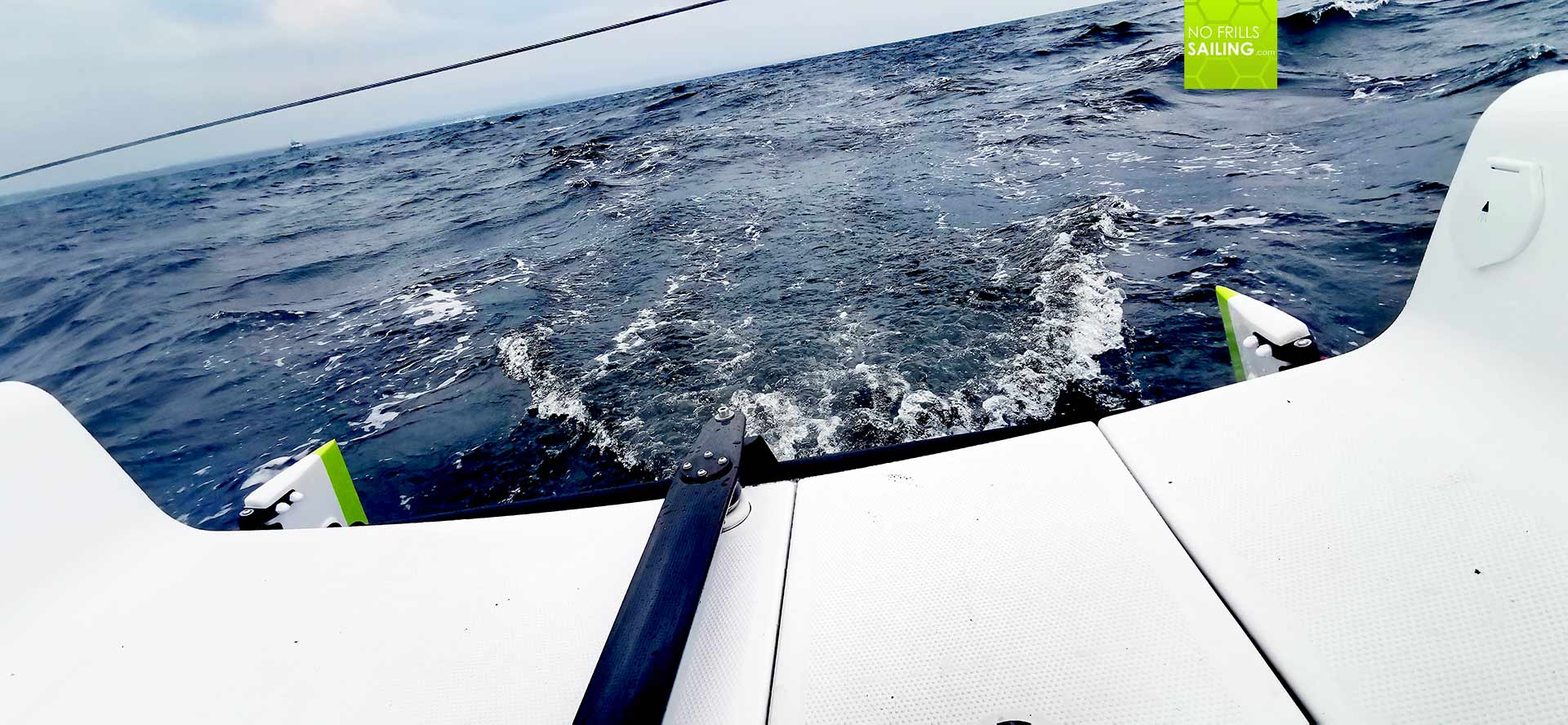
Today I sailed just 20 miles or so from one harbour to the other but it really demanded the whole out of me as a sailor: 18 knots and ever building sees, the forecast predicted an increase to +25 knots over the day and to add insult to injury the main halyard got damaged the day before. So I decided to get up very early, have a quick dash to the new harbour and sit out the heavy wind period. Sailing with Jib only the boat was planning, racing downwind. As I approached the harbor, wind had increased to +20 knots and landing was quite adventurous. Anyways, as I was sitting in my small boat, contemplating the situation, I thought: “Well, if anything happens, you are the only one who can do something!” The only one!
A new EPIRB for my own boat
And here´s what I mean: Sailing single handed means that every step you take, every decision you make and every thing you do not do is ultimately and completely causing other things to happen, or not to happen. In good or bad. In case something very bad happens, there won´t be any crew member to join in, take over the helm or take care of your wounds. It is and will be just upon you and you alone. This is the reason, for example, why I invested in such a well-stocked first aid kit. And lately, in a new EPIRB.
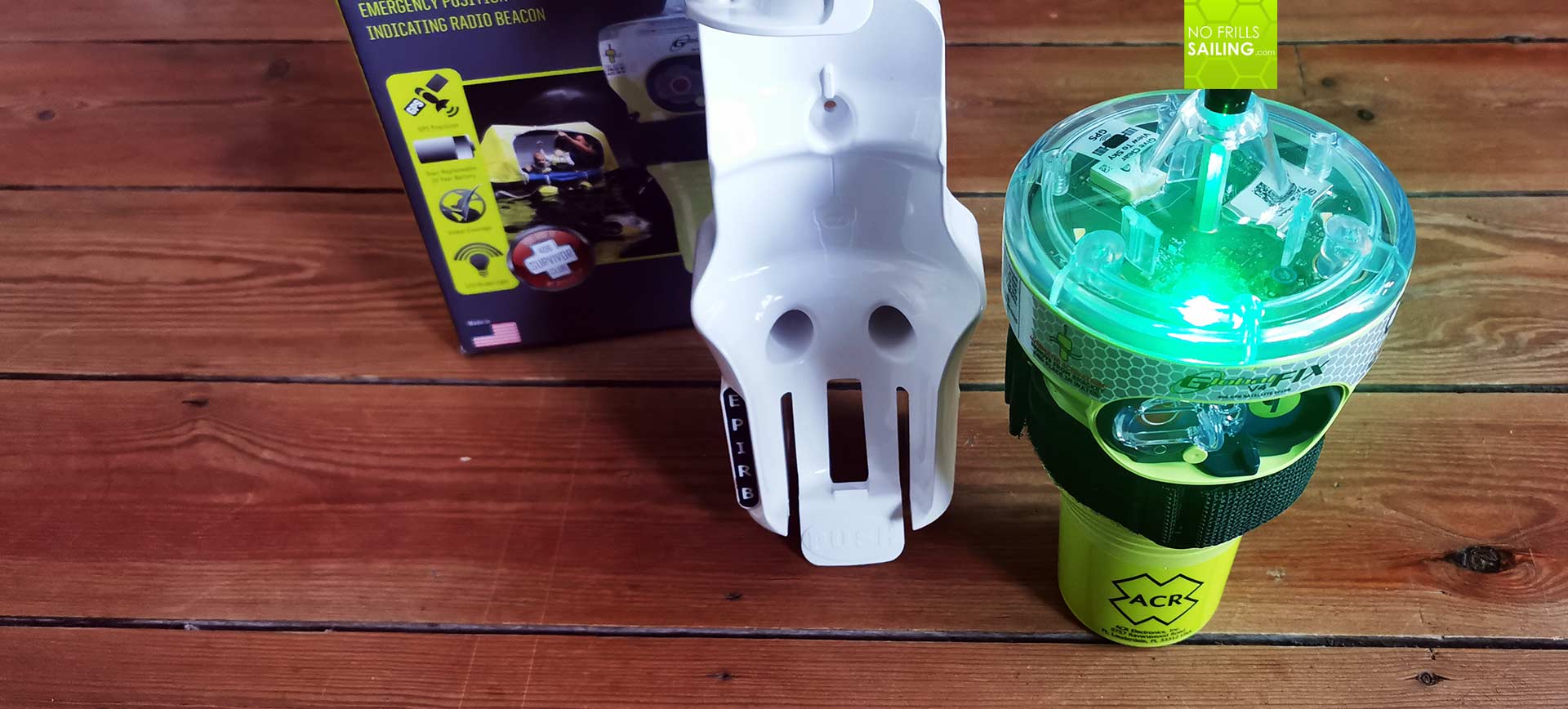
I already own an EPIRB from my old boat. Besides the fact that this beacon is due for professional checkup in the year 2011, which is now 10 years ago, it is still working: Pressing the button the old EPIRB will perform its self-test and, as far as I can judge, it passes. Now, apart from the fact that this old ACR-EPIRB is very heavy and big, I simply don´t want to trust my life – and this is a device of the last resort – to a part that is 10 years overdue. So I went to buy a new one.
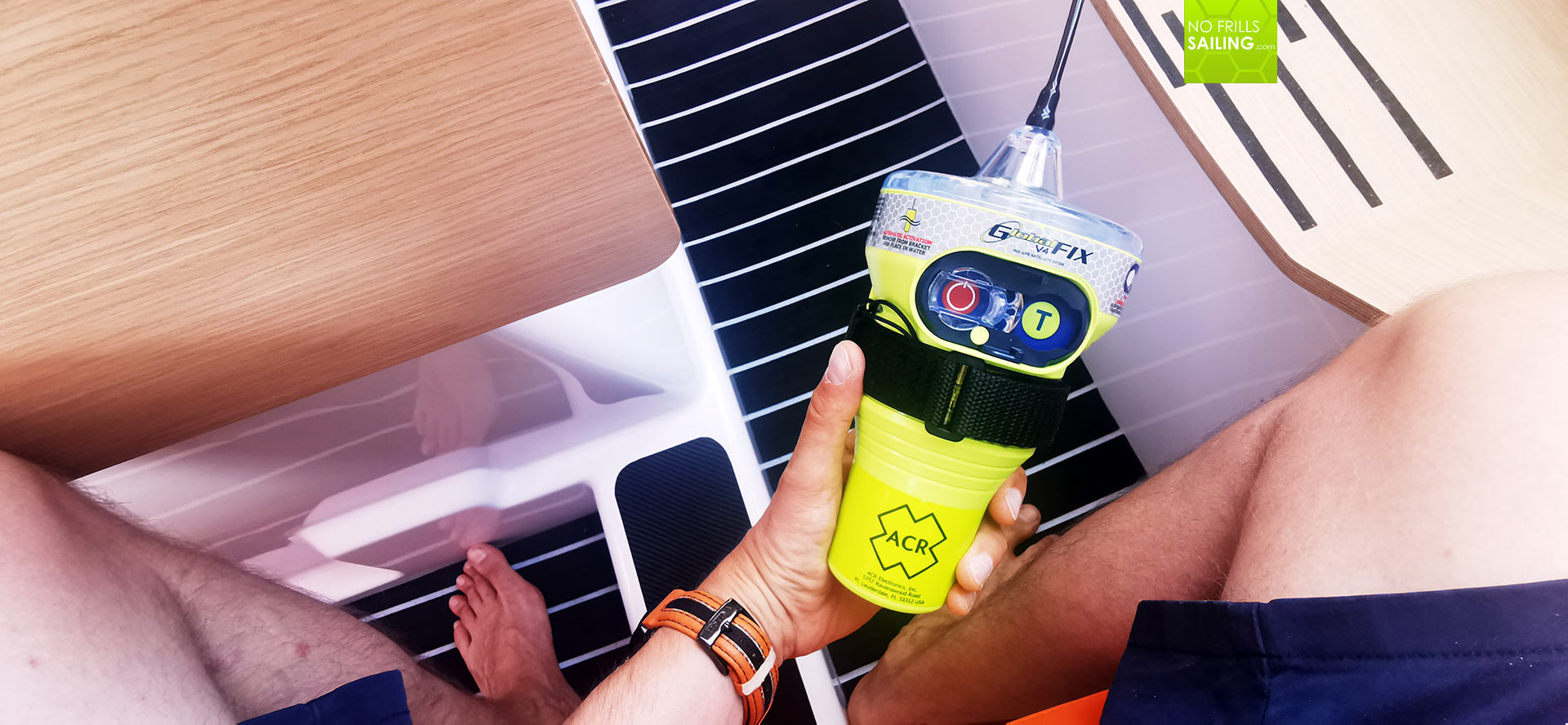
There are many EPIRBs on the market: Class A will set off automatically when hitting water or pulling a trigger, Class B will only be set off by a man pressing a button. No matter what, you should aim for a full Cospass/Sarsat system and spare no money. In the case of the worst you might want the fastest and system and be sure that your distress will be reaching somebody surely. My ACR Global Fix 4 is worth 800 to 900 Euros (including MMSI-programming) and I find it very handsome. It is a modern piece of fascinating technology and a part of the ship´s safety equipment I would never trade in for anything.
Where to mount your new EPIRB beacon
Before casting off for this trip I had my new EPIRB programmed and sat down at home, of course, to study the instructions. A modern EPIRB like the Global Fix 4 can be run on a single battery for up to 10 years before it needs to be refurbished and recharged. The beacon is a very sturdy, simple to use and resilient piece of technology. I went aboard GEKKO with it and too a thorough look at where to mount it.
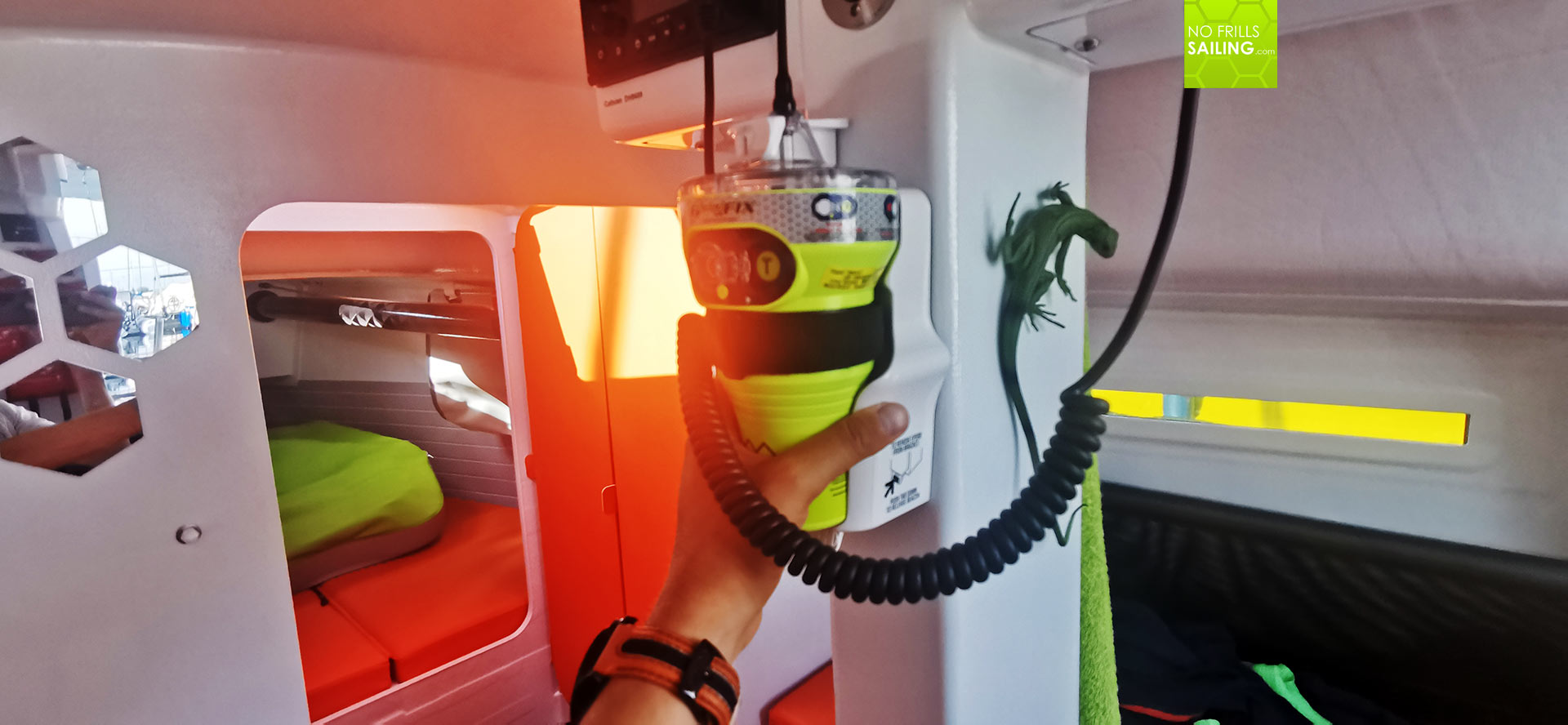
On the one hand you want it to be easily accessible – even in a worst case scenario like keel falls off, boat flipped over, fire aboard, rigging down or any other catastrophy at sea you might think of – on the other hand you want to make sure that under no circumstances the EPIRB can be set off by mistake. I am sailing with kids and apart from the fact that my kids should know – because I train with them – that this yellow nice can is off limits and must not be touched whatsoever … you can never know.
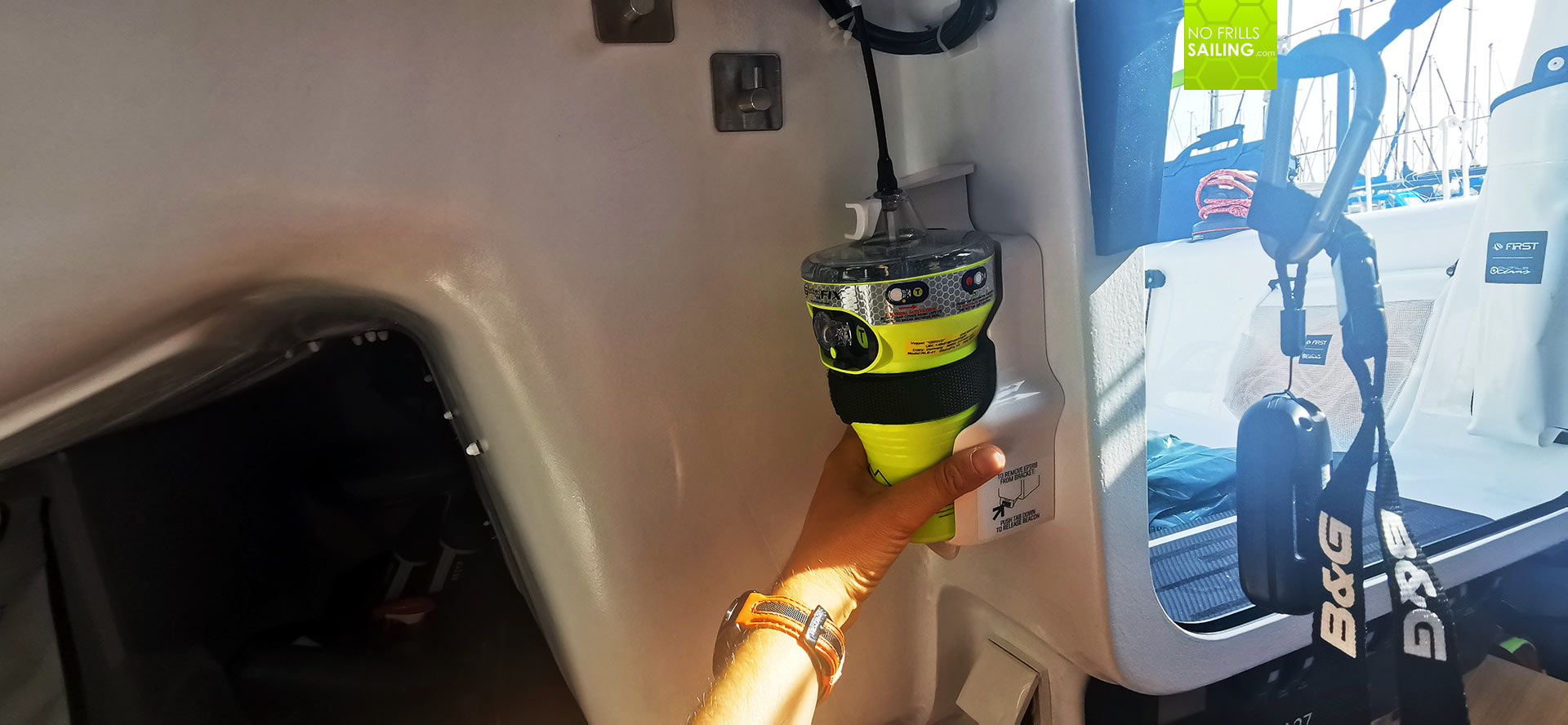
I think I found the best place: Right next to the entryway down on the righthand side of the entrance. On my boat this is where the plotter will be folded back, protecting the EPIRB from touchy children´s fingers or false alarm, but also in exactly the right spot. On my boat, starboard pilot berth is reserved for navigational equipment, boat papers, logbook, fire extinguisher and other safety-related equipment. So this is, I guess, the best suitable place for me. Where it is in your boat, you should decide for yourself by just taking your new EPIRB with you and have is placed on different spots, watch, look, contemplate and decide.
Safer sailing
I cannot say that I am a better sailor now, of course not. But having this beacon at hand is one very important piece of the puzzle I call “safety concept” for my boat. An EPIRB is one part, where your life jacket, a life raft, fire extinguisher, anti-leak equipment and so play the same role. Don´t forget to put it on your boat, don´t forget to make sure at least you know how it works and always play safe when you are out there: The seas can be pretty rough.
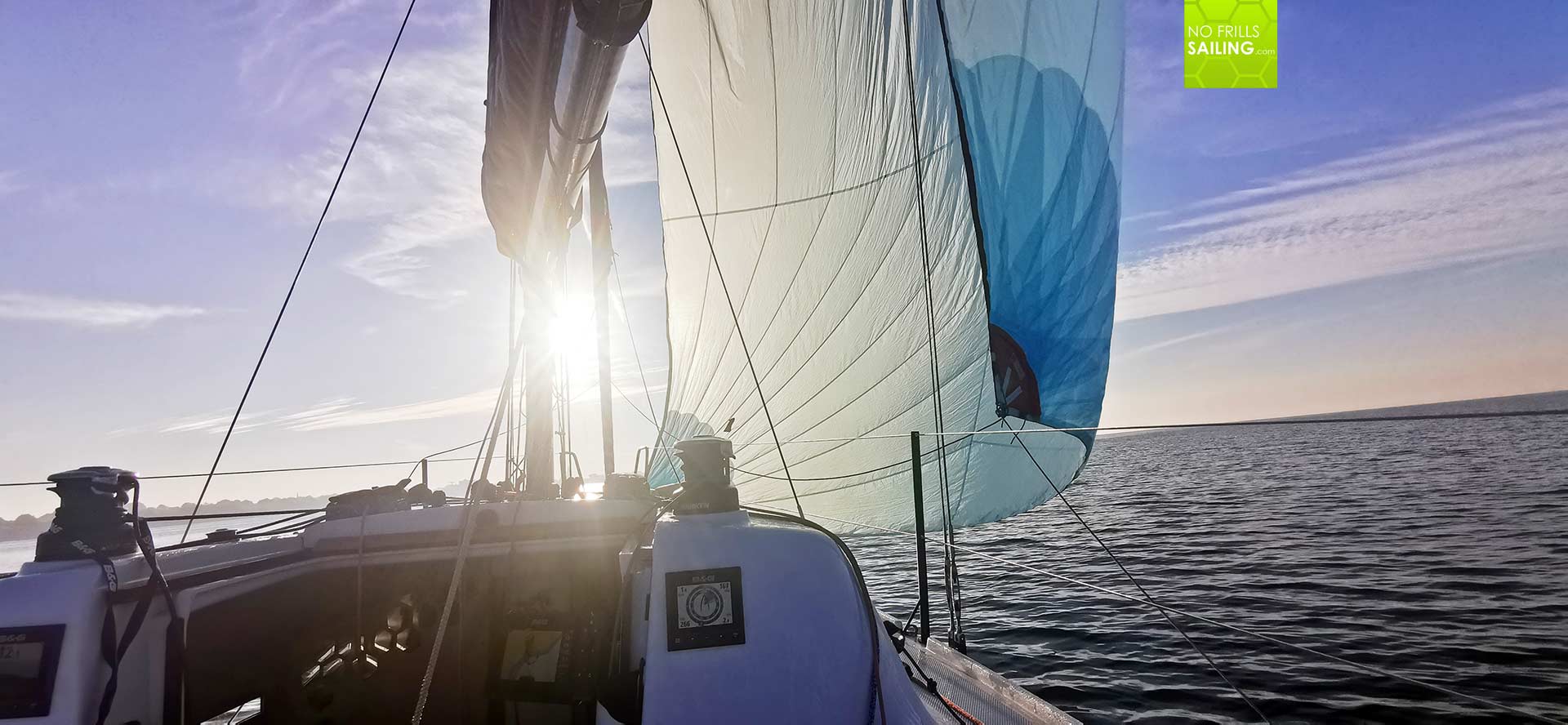
Now, whilst writing this article, outside the storm rages and we still have +20 knots in the marina. My boat is rocking in her berth and, although we have a clear blue sky, the violent shaking and the roar of the wind makes me think of the hazards and risks we take when going out alone. Good to know that I have provided myself with several safety layers to make me arriving in one piece, in good shape and well up. The new EPIRB, although I wish I´d never ever use it, is one of these important layers.
You may also like to read these related articles:
How an automatic life jacket is made
A safety concept for my (old) boat
Dress rehearsing: MOB code of practice
